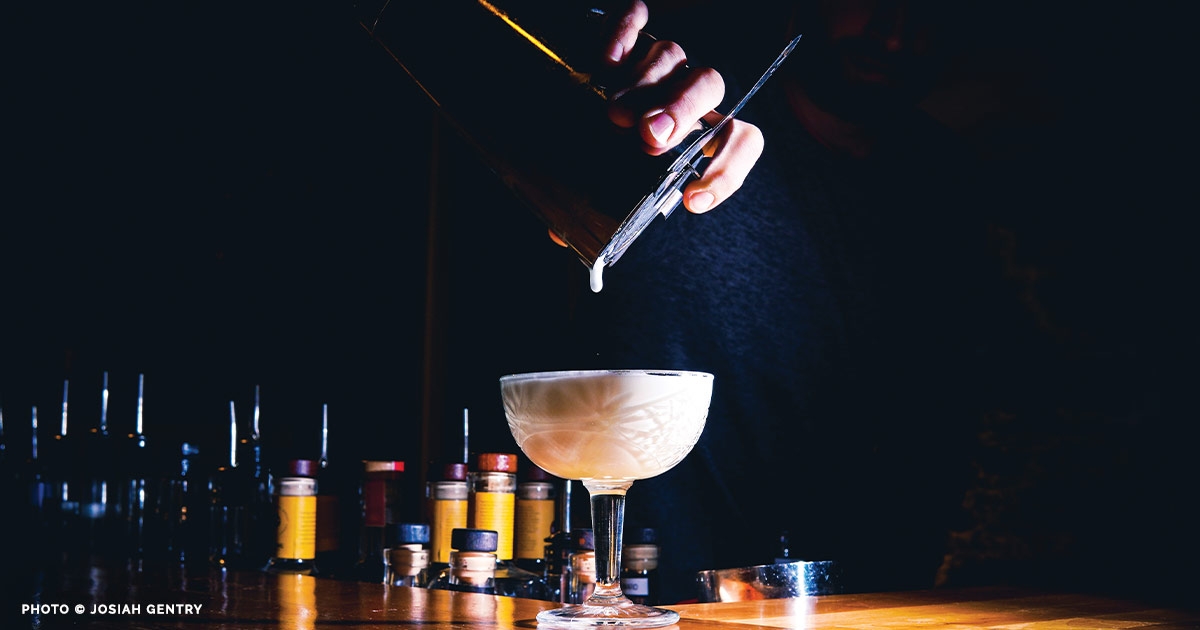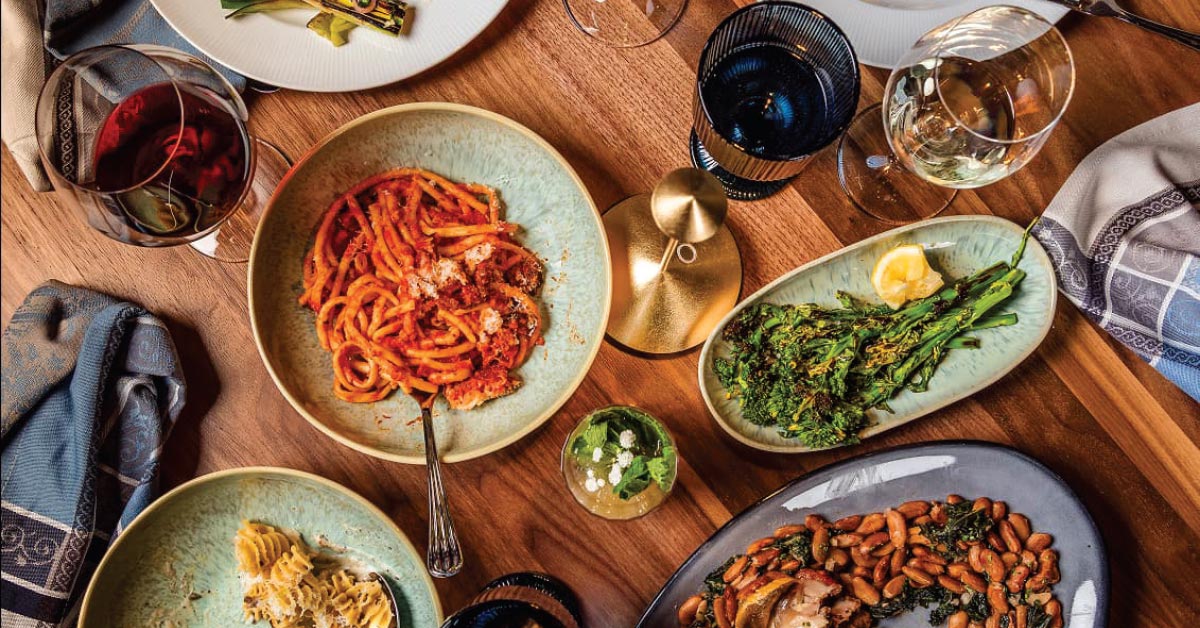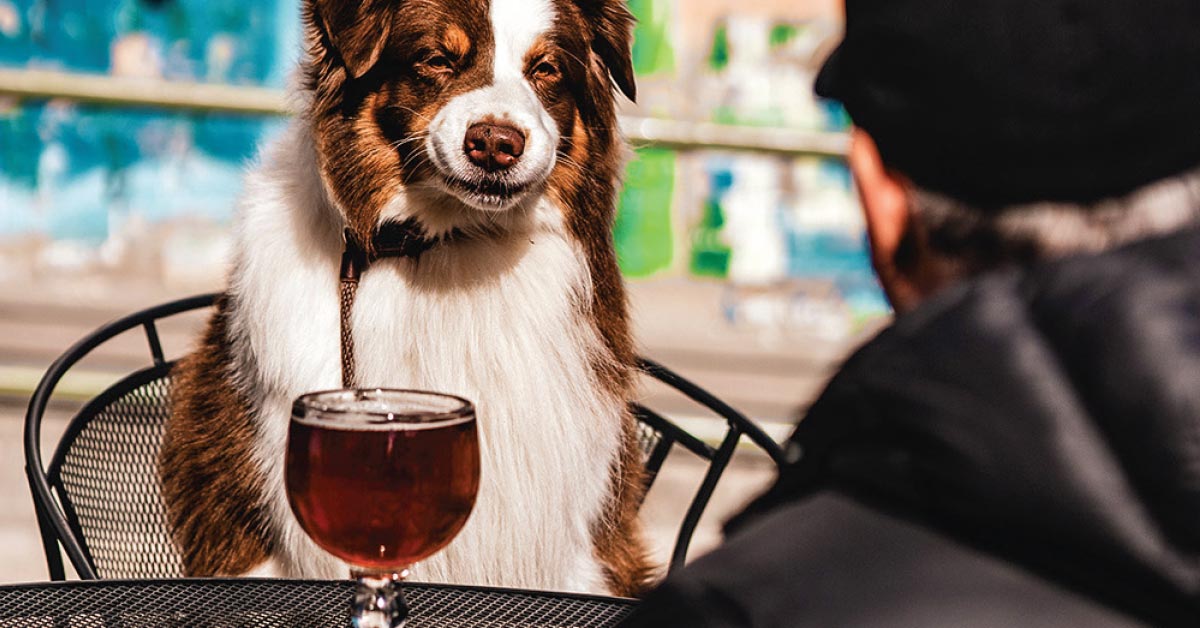Crafting a cocktail is an art, a science and a journey, all in one.
As West Michigan’s food and beverage scene continues to grow, more bartenders are diving deep into the creation of exciting and innovative cocktails—learning how to take these mixed drinks to new heights by researching the classics, exploring flavor pairings and working with local ingredients.
The cultural collective has yet to produce a better name for these experts than “mixologists,” and while cocktails do involve a bit of science implied by that term, there’s also a human element that brings the craft closer to art, or even cooking. And that should be encouraging, because it means you don’t need a PhD to make a delicious beverage of your own—just top-notch ingredients and a palate.
So, let’s take a look at how those incredible cocktails come together at the bar, and how you can get started crafting your own libations at home.
BEHIND THE BAR
My personal cocktail repertoire tops out at the three-ingredient negroni, so we talked with a local pro for his expertise. While working in the music industry and doing photography, bartender Josiah Gentry fell in love with creating cocktails at The Winchester. “It was a perfect combination of everything I love. Human interaction, building an experience for people, and the creative side. There’s such a visual element to it.”
Now a top bartender at Eastern Kille Distillery, Gentry has years of experience, and he’s gained a special appreciation for local distilleries. Aside from the amazing work culture that Eastern Kille has created—leading to long careers for their employees—Gentry also loves how involved he gets to be in the process from start to finish. Rather than ordering a hodgepodge of ingredients from out of state, the bartenders are at the source of the spirits and liqueurs and know “all of the bones of the cocktail,” since they also get to create their own flavored syrups and infusions. “It gives you a cutting edge.”
Eastern Kille even runs a Bartender Takeover Series, which allows employees to come up with truly personal and creative themed cocktail menus. Not to mention the fact employees are helping craft new liqueurs, such as the manager of hospitality’s take on a génépy (the most famous of which is Chartreuse), made with hand-foraged ingredients. Or Gentry’s take on Fernet, a recipe he’s been working on for years.
CRAFTING A COCKTAIL
When it comes time to actually create a cocktail, Gentry suggests always starting with the classics. Whatever drink you concoct, it’s bound to be a variation on an existing drink, so you might as well do it intentionally. Would you rather step into the kitchen, throw a bunch of ingredients in a pot, and accidentally “invent” chili? Or would you rather know you’re making chili from the start and use that foundational template to innovate upon?
“A term that bartenders here use all the time is Mr. Potato Head,” Gentry said. “If you really dissect a recipe that’s specific to a bar, you can almost always find its roots, whether it’s a sour riff, daquiri riff, old fashioned riff, etc. So that’s usually a great jumping off point.”
From there, Gentry typically aims for a certain style or effect. Will the drink be refreshing, bracing, herbaceous, bright, boozy, smoky, sour, sweet? Once you’ve made that decision, think to the ingredients you know and how they could get you there. “I usually start with a single flavor that I really want to highlight, whether that’s in a simple syrup, liqueur, bitters.”
Obviously, becoming familiar with ingredients takes time and, uh, let’s call it “research,” but if you’re reading this, you likely know at least a few drinks you like. Try making one of your favorite cocktails at home first as practice, and that can help give the confidence and familiarity to branch out.
There’s help out there too. Gentry strongly suggests the Flavor Bible, which gives a comprehensive matrix of flavors that will pair well with the main one you’ve chosen to highlight.
THE END GOAL
What makes a great cocktail? The answer will differ whoever you ask, but it often involves the word “balance.” Too much of any one ingredient can turn your drink into a monolith of flavor. Some experts have suggested “tension” is important as well—a push and pull of aromas, flavors, and even texture.
“For me, what really sets a cocktail apart is innovation,” Gentry said. “Like, finding a cocktail that’s a riff on a food dish, or uniquely implements an ingredient is what catches my eye and gets me excited about a cocktail. So, it’s a unique role for us to be able to tie in that relatability but also pushing the scene, especially in West Michigan where it’s on the cusp of really growing into something.”
FIRST, WITH YOUR EYES
Just like plating food, the visual aspect of a cocktail is crucial too. For bars, thought goes into picking the glassware, choosing the garnish and putting it altogether into something that draws the eye and gives you an idea of what you’re about to drink.
However, you don’t have to overcomplicate it. “A lot of times, the ingredients will dictate how you present a cocktail. If there’s lemon juice in something, we’ll use lemon peel as a garnish.”
Adding a garnish at home is an easy way to impress your guests, and all it takes is a citrus peel or an herb sprig to dress your drink up.
“But the best garnishes also impact the drink,” Gentry said. “A twist is so much more than a pop of color, it’s also the aromatics. Or smacked mint, you get the fresh bouquet with every sip, which really contributes to the experience.”
Then there’s glassware, which can make a huge difference, but again isn’t overly difficult to get right. If your cocktail is like a martini, already diluted to perfection, you serve it neat in stemware. If it’s served over lots of ice (with a straw, is my preference), you want a collins glass. For a boozy drink over a big ice cube or sphere, the classic rocks glass is ideal. Get each of these for your home bar and you’re set for any cocktail.
CREATING YOUR HOME BAR
Now that you know the very basics of crafting a cocktail, it’s time to start stocking up on the necessary tools and ingredients. Here’s our suggestions for the basics, and keep in mind that local distilleries have top-notch offerings of most of the spirits and liqueurs listed here:
Tools
Cocktail shaker
Measurer (a.k.a. jigger)
Strainer
Fruit peeler
Stir stick
Glassware
Stemware (Martini, coupe, or Nick & Nora)
Rocks glass
Collins glass
Spirits
Whiskey
Gin
Vodka
Rum
Tequila
Accoutrements
Bitters
Tonic water
Soda water
Simple syrup
Basic Liqueurs
Amaro
Amaretto
Elderflower (a.k.a. The Bartender’s Ketchup)
Vermouth (technically a wine)
Garnishes
Fresh citrus
Herbs
Cherries
Olives





